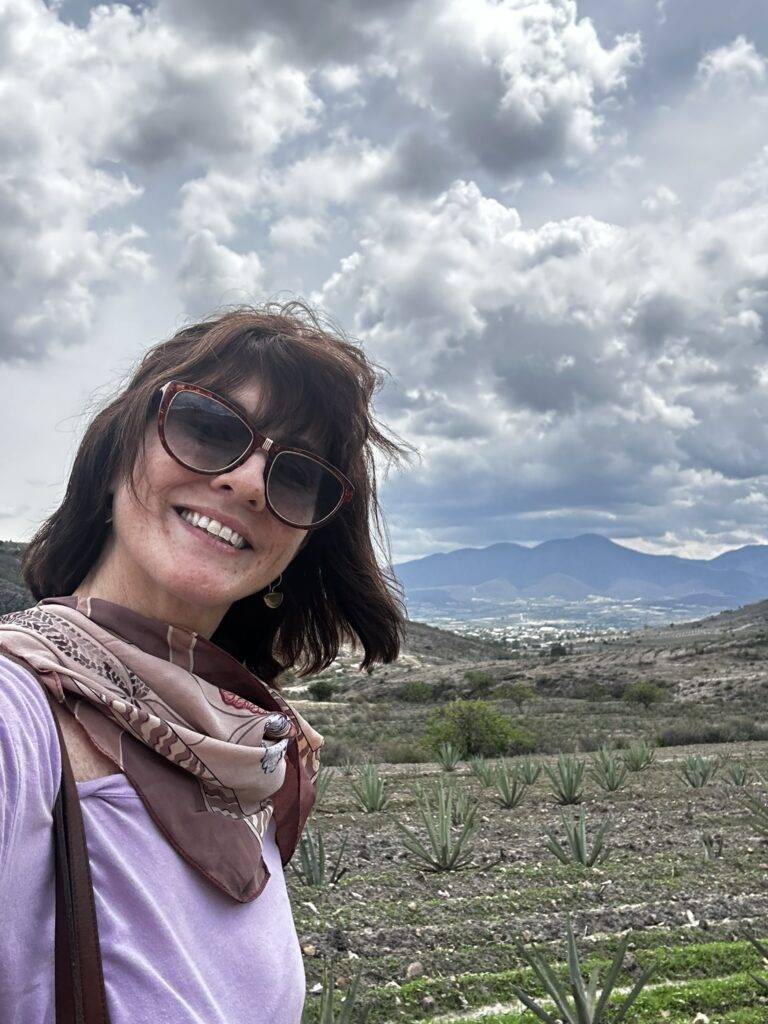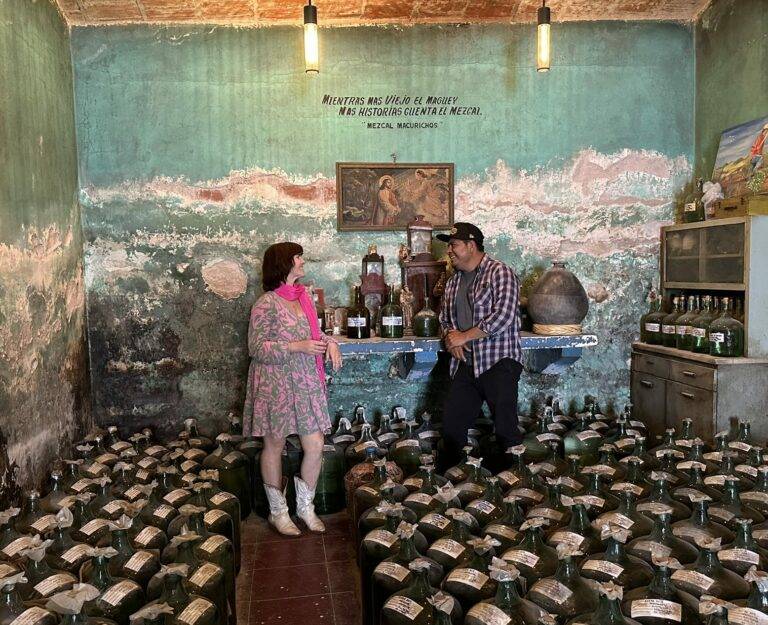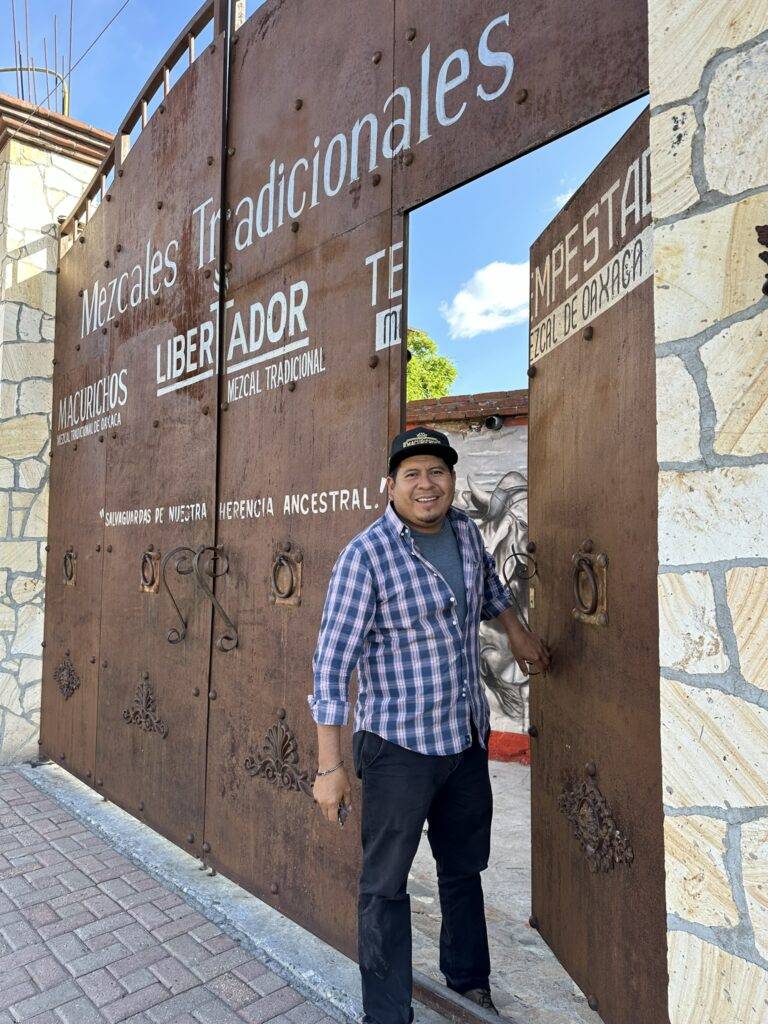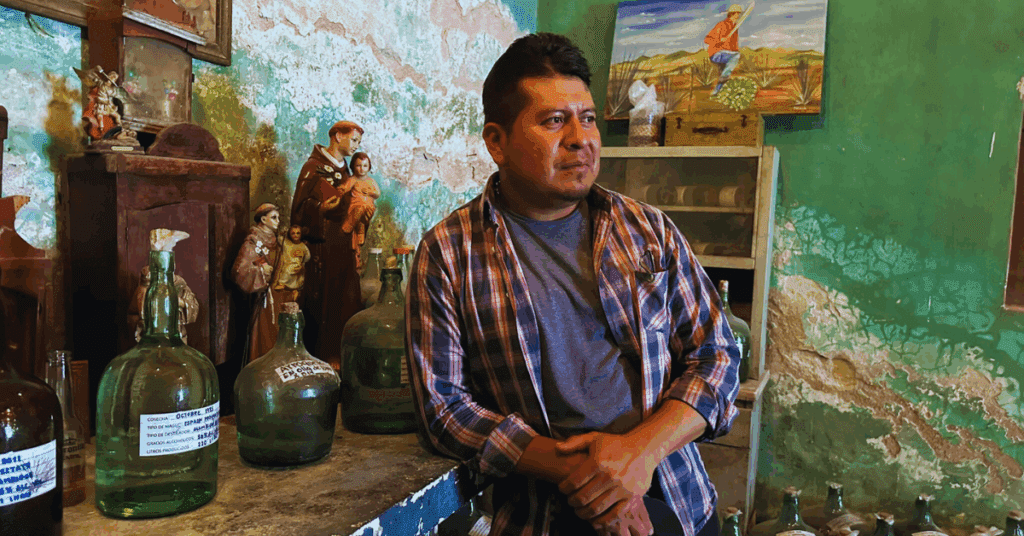Going through the many photos and videos I’ve yet to print or edit, I’m reminded that I must continue telling the story—not just of my adventures in Yucatán, but of my journey across all of Mexico. Damn, I love this country. There’s something captivating, surreal, and endlessly curious about the way life is lived here—how people eat, move, and meander through time. Every place reveals a new story, every face offers a fresh perspective, whether you’re wandering along uneven sidewalks, down dusty backroads through sleepy towns where no one is ever in a hurry, or navigating the chaotic, honking rhythm of the city—where urban life pulses with its own kind of poetry.
Last July, I flew to Oaxaca City for the first time—and let me tell you, it’s one of those places in Mexico you simply must experience. It’s brilliantly boisterous and unmistakably Mexican, bursting with banda music, colorful ribbons braided into the hair of the “Chinas Oaxaqueñas” during Guelaguetza, and the earthy scent of corn—and heaven. I fell in love with Oaxaca the moment I stepped off the plane. Everyone I encountered on the street was warm, helpful, and full of pride. The city carries an air of joy, strength, and that unmistakable aroma of smoky mezcal.


Today, I’m thrilled to finally share an interview I had with Gonzalo Martínez Sernas, a poet of life, a visionary, and a proud Zapotec man dedicated to the ancient craft of mezcal making. Along with his family, he founded Macurichos Mezcal in the heart of Santiago Matatlán. Gonzalo is one of the most eloquent people I’ve ever interviewed. He welcomed me into his home—which doubles as the distillery—and shared his family’s generational story with such depth and grace. It’s a story rooted in dust, dreams, and the sacred agave fields of Matatlán, one of Oaxaca’s mezcal capitals.
This article traces Gonzalo’s emotional journey—from childhood in the agave fields and the heartbreak of family loss to rebuilding a legacy with nothing but a few liters of mezcal and a dream. We step inside his home-distillery, hear the stories behind each bottle, and witness how Macuricho has grown into a symbol of identity, struggle, and spiritual connection.


A few weeks earlier, I ran into my friend, the renowned Mexican chef Pedro Evia, at a local cantina in Mérida that, by the way, serves the best suadero tacos in town—La Reforma Auténtica Cantina Mexicana on García Lavín (bookmark it!). I told him I was preparing to visit Oaxaca—a place he knows and loves. For any foodie, Oaxaca is the promised land. Chef Evia, along with Chef Sara Arnaud from Apoala, was invited to cook at the 61st anniversary celebration of Mezcal Macurichos, an epic four-day event featuring 15 of the top chefs from across Mexico.
When I landed, Chef Evia pinged me on WhatsApp: “Are you here? You’ve got to hurry to Casa Oaxaca—Chefs David Alarcón and Daniel Castuita are waiting for a ride up the hill. You can catch it with them!”
“Can I just grab an Uber if I miss them?” I asked.
“Nope. It’s on private land, across a river, deep in the maguey fields.”
So the race began. My taxi weaved through the crowded streets of a city I had never seen but was already falling in love with, while my veins pumped with adrenaline. I jumped out five blocks from the hotel, sprinting with my suitcase clattering behind me, sweat pouring under the fierce Oaxacan sun. We climbed in the van and took off towards the hills of maguey. We finally made it—after getting stuck halfway up due to an oversized puddle that we couldn’t drive out of– and walking the rest of the way through the beautiful lands of the maguey highlands (the chefs ran—they had to get the food on the grill!). I arrived at a dazzling scene: live banda music, vibrant colors, and towering Mojigangas, those iconic giant puppet-like dancers. It was the ultimate Oaxacan welcome. Over 100 people were there, sipping mezcal and savoring dishes from Mexico’s best chefs—even Luis Hernández of Los Tigres del Norte was there enjoying barbacoa de borrego.
A few days later, I was invited back by Gonzalo and his sisters. Sitting with them, listening to their story unfold among the copper stills and aging bottles, was an honor I won’t soon forget. And today, I’m honored to begin telling that story here.
Now Gonzalo and his family and getting ready to celebrate their 62nd anniversary. I found it fitting to publish this homage to their legacy just before the next celebration.
Macurichos Mezcal: A Zapotec Legacy Distilled Through Time
This following story is told in the words of Gonzalo:
“After hours sitting in La Condesa, sad, tired, desperate and hungry, I longed for those days in the mountains with my grandfather. Even with so little, we were happy—because we had everything the earth gave us.” –Gonzalo Martinez “Largo Trecho”
My name is Gonzalo Martínez Cernas, and I am the maestro mezcalero and founder of Mezcal Macurichos, a project built with my family in Santiago Matatlán, Oaxaca. For over 61 years, my grandparents and father worked this land. Here in our family distillery—our palenque—we continue a tradition that is deeply Zapotec in origin: one of reverence for the earth, the agave, and the ancestors who showed us the way.
My grandfather left us a plot of land—an inheritance of soil, sweat, and dreams. We called it Los Campos de la Esperanza, the Fields of Hope. As children, my siblings and I would go with our father to clean the fields, plant agave, and learn the rhythms of the earth. We were just boys, running between rows of young agave, our hands sticky with sap and dirt, not knowing yet the weight those fields would carry in our lives.
My grandparents were humble laborers. They planted corn, beans, and agaves—seeds from legendary plants passed down through generations. Though they worked as field hands in other people’s distilleries, they dreamed of building something of their own. With my father, their only son, they eventually raised a simple shelter of clay and palm that would become the roots of our palenque.
We were raised within those walls. My siblings and I grew up learning not just the craft of mezcal, but the values of patience, hard work, and respect for tradition. Our Zapotec heritage taught us to treat the agave as sacred—to ask permission before harvesting, to offer thanks afterward, and to understand that every bottle is a prayer, a story, and a memory.
The 1960s and 70s were golden years in Matatlán, when nearly every family produced mezcal and masters of the craft were revered. But the industry suffered a devastating decline due to government overregulation, high taxes, and the rising dominance of tequila, which was backed by stronger industry and state support. Additionally, cultural stigma, mass migration from rural communities, and lack of commercial infrastructure caused many small producers to abandon their palenques, nearly erasing the tradition. Many in our village migrated to the U.S. My father stayed behind. My grandmother, the strong-willed Lorenza, wouldn’t let him go. It meant hard times for us—poverty, hunger—but it also forged our determination.
Then, in 1999, the tequila boom hit. The price of agave skyrocketed from 30 centavos to 18 pesos a kilo. The mezcal industry, however, was drowning—liters sold for barely 10 pesos. My father made the painful choice to sell the agave early. At the same time, tragedy struck: my brother, full of promise and brilliance, died in a terrible accident. He had dreams of transforming our state, and losing him broke us in ways that words can’t fully explain.
Grief-stricken, my father tried to renegotiate the sale of the agaves, still two years from maturity. But the buyers disappeared. All we had left were the fields—and memories. We began harvesting those agaves in 2001 and 2002. We saved a small batch, one we would later bottle in 2018, and again in 2022, in honor of the 58 years of our family’s legacy.
In that same chapter of our story, we lost my father. But rather than give in to despair, my brother Pedro and I packed a few boxes of mezcal, a plastic bag of tlayudas, and all the dreams we had left—and set off for Mexico City. We knew no one. The second day, hungry and hopeless, I sat on a bench in La Condesa and cried. I missed the mountains. I missed my grandfather. I missed the simplicity of a hard day’s work under the sun, when joy could still be found in the little things nature gave us.
That moment became the first ending of my book. I wrote:
“After hours sitting in La Condesa, sad, tired, desperate and hungry, I longed for those days in the mountains with my grandfather. Even with so little, we were happy—because we had everything the earth gave us.”
That painful moment planted the seed for Macurichos, a new beginning. The name comes from my grandmother, who would call out “¡Macuricho!” every time my grandfather came back from the fields—tipsy, relaxed, riding his horse like a man in autopilot. It’s a word rarely used now, but in our village, it describes someone who enjoys a good drink—maybe a little too much. ¡Ahí viene el macuricho!” became a word of endearment and now a badge of pride, our flag, our identity. People now call me El Maestro Macuricho, and our family is known as Los Macurichos.
But Macuricho is more than a nickname. It represents our commitment to artisanal mezcal, small batches, and honoring the agave. We don’t chase mass production. We wait—8, 15, sometimes even 30 years—for the right moment to harvest. We use pit ovens, crush the agave in a traditional taona, and ferment in open air with the natural yeasts of the valley. We distill in clay and copper, depending on what the agave tells us. We work with 18 varieties of agave and craft our spirits in tiny, seasonal batches. Each mezcal we produce carries the taste of its altitude, its rainfall, its soil.
Our batches are tiny—maybe 900 bottles a month—and we let the spirit decide its own timing.
In our culture, mezcal has never been just a drink. It is a sacred medicine used in ceremonies, offerings, and healing rituals. We were taught to read its pearls—the bubbles that dance when it is poured—to know its strength. We make mezcales over 46% ABV, some even reaching 60%, honoring the powerful “puntas” our ancestors once made.
Our Cuarto de Escalos, once my grandparents’ bedroom, now holds bottles from decades past. It is a temple of mezcal, a quiet space filled with the memory of every harvest, every loss, and every dream. Here we keep mezcales made during the hardest times—batches my father once said were worth less than a peso. And yet, we saved them. We believed one day the world would want to taste our story.
We come from a place archaeologists now recognize as one of the earliest agave distillation zones. We walk the same paths our Zapotec ancestors once walked, through fields of tepestate, tobalá, jabalí, arroqueño, and the legendary blancos. We distill in the old ways, and we cook in kitchens that still carry the scent of our grandmother’s mole, our mother’s tortillas, and the wisdom of a thousand Zapotec recipes.
Macurichos is not a brand. It is a life, a lineage, and a legacy. It is the laughter of my grandfather on his horse. It is the silence of the fields before the harvest. It is the fire in the clay pot, the smell of roasting agave, the prayers whispered over every fermentation. It is the bloodline of a Zapotec family distilled into spirit.
And it is an offering—to our past, our people, and the future we continue to shape, one drop at a time.
Follow Macurichos Mezcal here https://www.instagram.com/mezcalmacurichos/?hl=en and if you get a chance send Gonzalo a message and order his brilliant book Largos Trechos.


MID CityBeat Slow Sundays for a Fast World
My series continues Slow Sundays For a Fast World where I write via newsletters of my travels around Yucatan and all of Mexico. You can sign up here: https://dashboard.mailerlite.com/forms/309827/150956799925684180/share




